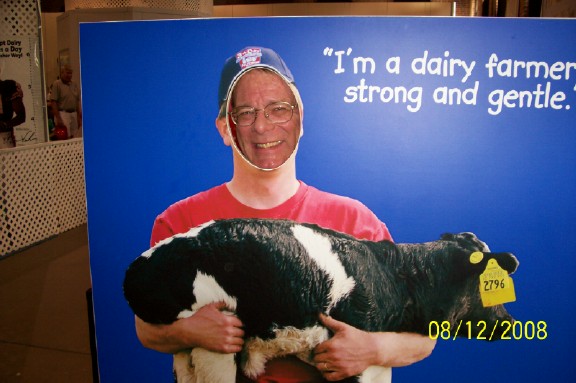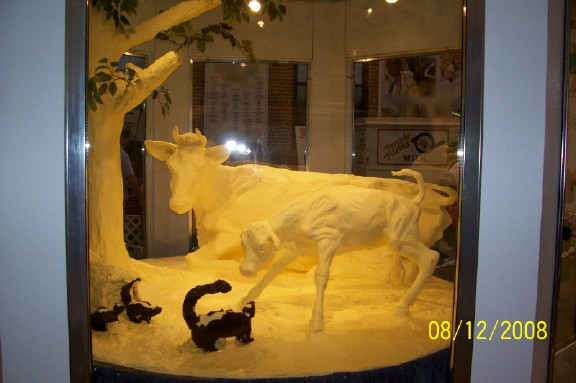It is rare well at least medium rare that I give credit where credit is due but the Peak Oil folks and Leanan in particular deserve so much credit. Day in and Day out..NO MATTER what the price of oil or gasoline…they still believe that we are running out of the stuff. That is great because WE ARE:
:}
From the paranoid:
http://www.peakoil.com/modules.php?name=News&file=article&sid=47647
http://www.csmonitor.com/2009/0415/p13s01-wmgn.html
Economic slump provides
tinder for global conflicts
With more people pushed into poverty,
the probability of armed rebellions increases around the world.
By David R. Francis | ColumnistThe new director of the National Intelligence Agency caused something of a stir last month when he warned Congress: “The primary near-term security concern of the United States is the global economic crisis and its geopolitical implications.”
On that theme, Hampshire College professor Michael Klare sees the world economic meltdown as already prompting “economic brush fires” around the world and worries whether these could prove “too virulent to contain.”
It seems as if the lyrics “trouble, trouble, trouble” from Meredith Willson’s “The Music Man” have become too real in today’s world.
Last November Robert Zoellick, president of the World Bank Group, noted that the global financial crisis would hit hardest the “poorest and most vulnerable” in the developing world. At that time, Mr. Zoellick calculated another 100 million people around the world had been driven into poverty as a result of soaring food and oil prices. These prices have eased. Nonetheless, hundreds of millions in poor nations must try to balance household budgets on incomes of $2 a day or less.
Now he’s forecasting the world economy will shrink by 1 to 2 percent this year, with difficulties possibly extending into next year. That’s much worse than the bank group’s forecast last year. It will be the first time world output has actually declined since World War II. And each 1 percent decline
in developing-country growth rates pushes an additional 20 million people into poverty, Zoellick reckons.
“The political ramifications [of rising poverty] will be great … though hard to predict,” says John Sewell, a senior scholar at the Woodrow Wilson Center for Scholars in Washington. Before the election last fall, he assembled a group of experts who urged the incoming president to streamline the nation’s development tools. These are now spread among 12 government departments, 25 government agencies, and almost 60 government offices. “No one is in charge,” the group held.
Powerful droughts around the world could cause food shortages, reversing a dramatic drop in global poverty that the economic crisis recently halted, worries Mr. Klare, an expert on peace and world security.
In Africa and in East Asia, population growth also adds to economic pressures.
As for brush fires, the driest tinder lies in eastern European states such as Ukraine, Latvia, Lithuania, and Bulgaria, he says. There, the people in fragile democracies had the notion that rising prosperity in the 1990s and up to 2006 would continue forever. Now the money from the West has dried up and gone home, leading to an economic bust.
“That is what is driving them to rage,” says Klare. “The promises have been taken away.”
:}
To the paradoxical:
http://www.peakoil.com/modules.php?name=News&file=article&sid=47644
http://www.msnbc.msn.com/id/30240000/
Renewable energy’s environmental paradox
Wind and solar projects may carry costs for wildlife
Sandy Seth, via Friends of the Bosque del Apache via AP
Sandhill Cranes fly in formation into the Bosque del Apache National Wildlife Refuge near Socorro, N.M., last year. Environmentalists have raised concerns that the birds’ habitats could be affected by a planned sun and wind power transmission line.
WASHINGTON – The SunZia transmission line that would link sun and wind power from central New Mexico with cities in Arizona is just the sort of energy project an environmentalist could love — or hate. And it is just the sort of line the Interior Department has been tasked with promoting — or guarding against.
If built, the 460-mile line would carry about 3,000 megawatts of power, enough to avoid the need for a handful of coal-fired plants and to help utilities meet mandated targets for use of renewable fuel. “We have to connect the sun of the deserts and the winds of the plains to places where people live,” Interior Secretary Ken Salazar said recently.
But the line would also cross grasslands, skirt two national wildlife refuges and traverse the Rio Grande, all habitat areas rich in wildlife. The graceful sandhill crane, for example, makes its winter home in the wetlands of New Mexico’s Bosque del Apache National Wildlife Refuge, right next to the path of the proposed power line. And much of the area falls under the protection of the Interior Department’s Bureau of Land Management (BLM).
:}
To the pusillanimously positive:
http://www.peakoil.com/modules.php?name=News&file=article&sid=47643
April 15, 2009
Action Plan for 50%:
How Solar Thermal Can Supply Europe’s Energy
The solar thermal sector’s strategy to reach a 50% contribution
to Europe’s space and water heating requirements by 2050.
by David Appleyard, Associate Editor
London, UK [Renewable Energy World Magazine]
The research efforts and infrastructure needed to supply 50% of the energy for space and water heating and cooling across Europe using solar thermal energy has been set out under the aegis of the European Solar Thermal Technology Platform (ESTTP). Published in late December 2008, more than 100 experts developed the Strategic Research Agenda (SRA), which includes a deployment roadmap showing the non-technological framework conditions that will enable this ambitious goal to be reached by 2050.
A strategy for achieving a vision of widespread low-temperature solar thermal installations was first explored by ESTTP in 2006, but since then the SRA has identified key areas for rapid growth. These focus points include
the development of active solar buildings, active solar renovation, solar heat for industrial processes and solar heat for district heating and cooling. Meanwhile, amongst the main research challenges is the development of compact long-term efficient heat storage technology. Once available, they would make it possible to store heat from the summer for use in winter in a cost-effective way.
The ESTTP’s main objective is to create the right conditions in order to fully exploit solar thermal’s potential for heating and cooling in Europe and worldwide.
As a first step for the development of the deployment roadmap and of the Strategic Research Agenda, ESTTP developed a vision for solar thermal in 2030. Its key elements are to establish the Active Solar Building – covering 100% of their heating and cooling demand with solar energy – as a standard for new buildings by 2030; establish the Active Solar Renovation as a standard for the refurbishment of existing buildings by 2030 (Active Solar renovated buildings cover at least 50% of their heating and cooling demand with solar thermal energy); supply a substantial share of the industrial process heat demand up to 250°C, including heating and cooling, desalination and water treatment; and achieve broad use of solar energy in district heating and cooling.
:}
They got it covered. My hat’s off to you.
:}


 SPRINGFIELD – Alexander “Alex” Joseph Casella, 69, died Thursday, March 5, 2009, at his home in Springfield.Alex was born August 10, 1939, in Taylor, PA, the son of Alexander Joseph Casella Sr. and Josephine M. Cesare Casella. He married Thanawan Kohrianchai on July 1, 2001, in Springfield, Illinois.Alex grew up in Moosic, PA. He received a B.S. in Physics from Villanova University, an M.A. in Physics from Drexel University, and a Ph.D. in Physics from Pennsylvania State University. He began his professional career in 1961 as a Physicist for the U.S. Dept. of Defense at the Frankford Arsenal in Philadelphia. In 1969, he became a professor of Physics at Jacksonville University in Florida. Alex embarked on a 30 year career in 1973 with Sangamon State University/UIS as Professor of Environmental Studies and Physics. He became the Director of Energy Studies at SSU in 1975. From 1989-1996, Alex served as Dean of the School of Public Affairs and Administration. In 2002, he became Professor Emeritus, Environmental Studies and Physics.Alex was the producer and host of about fifty, half-hour interview shows on environment/energy issues starting in 1985. He also hosted two weekly interview shows, “Faculty Focus” and “Peace Talks.”Alex was a member of Sigma Pi Sigma, Illinois Environmental Council, American Assoc. for the Advancement of Science, Union of Concerned Scientists (IL Coordinator), Sierra Club, Charter Member of Better World Society and Worldwatch Institute. He served on numerous boards and committees, including Energy Consultants Associates, Earth Week 1990, Springfield Urban League, and Springfield Area Arts Council. He provided numerous testimonies to committees of the State of IL House and Senate in areas of Energy Policy and was the prolific author of articles, papers, lectures, and letters to the editor on numerous and sundry topics.A loyal supporter of the Democratic Party, Alex ran for Alderman of Ward 7 in 1999, victory narrowly eluding him by a mere 8%.
SPRINGFIELD – Alexander “Alex” Joseph Casella, 69, died Thursday, March 5, 2009, at his home in Springfield.Alex was born August 10, 1939, in Taylor, PA, the son of Alexander Joseph Casella Sr. and Josephine M. Cesare Casella. He married Thanawan Kohrianchai on July 1, 2001, in Springfield, Illinois.Alex grew up in Moosic, PA. He received a B.S. in Physics from Villanova University, an M.A. in Physics from Drexel University, and a Ph.D. in Physics from Pennsylvania State University. He began his professional career in 1961 as a Physicist for the U.S. Dept. of Defense at the Frankford Arsenal in Philadelphia. In 1969, he became a professor of Physics at Jacksonville University in Florida. Alex embarked on a 30 year career in 1973 with Sangamon State University/UIS as Professor of Environmental Studies and Physics. He became the Director of Energy Studies at SSU in 1975. From 1989-1996, Alex served as Dean of the School of Public Affairs and Administration. In 2002, he became Professor Emeritus, Environmental Studies and Physics.Alex was the producer and host of about fifty, half-hour interview shows on environment/energy issues starting in 1985. He also hosted two weekly interview shows, “Faculty Focus” and “Peace Talks.”Alex was a member of Sigma Pi Sigma, Illinois Environmental Council, American Assoc. for the Advancement of Science, Union of Concerned Scientists (IL Coordinator), Sierra Club, Charter Member of Better World Society and Worldwatch Institute. He served on numerous boards and committees, including Energy Consultants Associates, Earth Week 1990, Springfield Urban League, and Springfield Area Arts Council. He provided numerous testimonies to committees of the State of IL House and Senate in areas of Energy Policy and was the prolific author of articles, papers, lectures, and letters to the editor on numerous and sundry topics.A loyal supporter of the Democratic Party, Alex ran for Alderman of Ward 7 in 1999, victory narrowly eluding him by a mere 8%.




